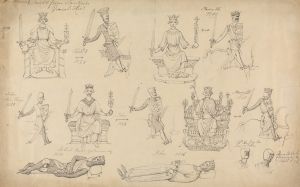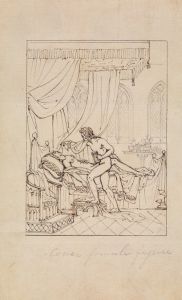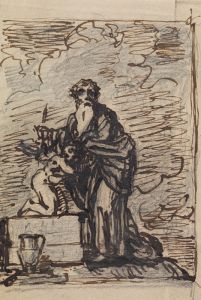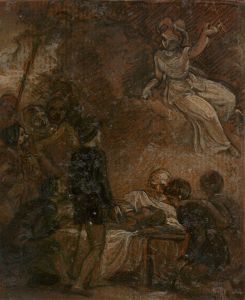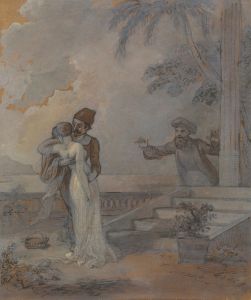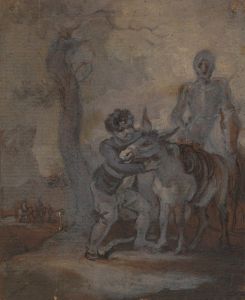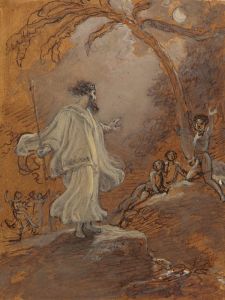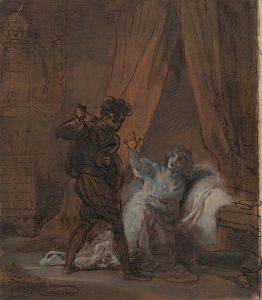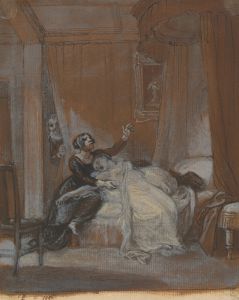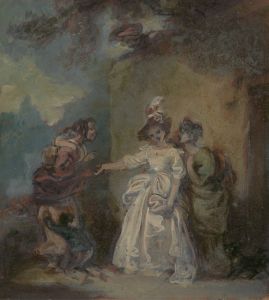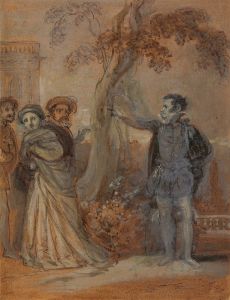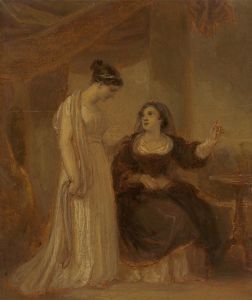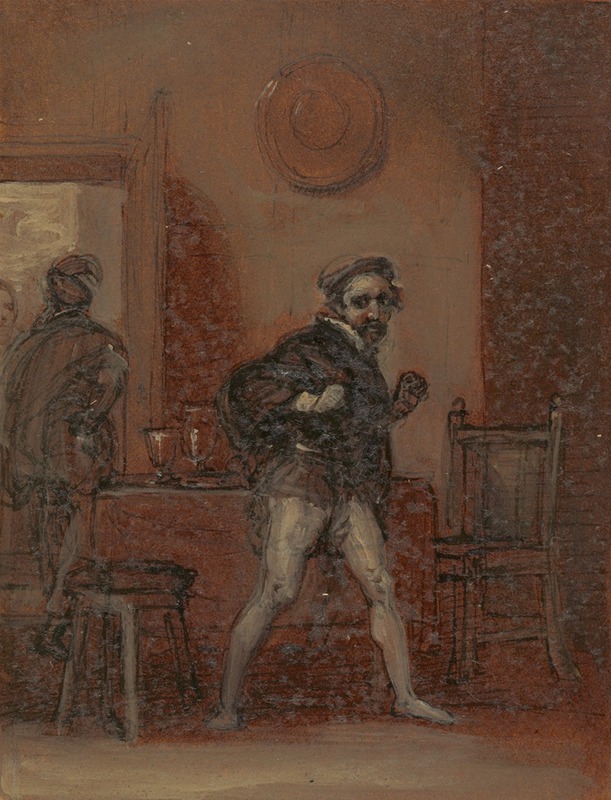
Ford in a Rage After Seeing Falstaff
A hand-painted replica of Robert Smirke’s masterpiece Ford in a Rage After Seeing Falstaff, meticulously crafted by professional artists to capture the true essence of the original. Each piece is created with museum-quality canvas and rare mineral pigments, carefully painted by experienced artists with delicate brushstrokes and rich, layered colors to perfectly recreate the texture of the original artwork. Unlike machine-printed reproductions, this hand-painted version brings the painting to life, infused with the artist’s emotions and skill in every stroke. Whether for personal collection or home decoration, it instantly elevates the artistic atmosphere of any space.
"Ford in a Rage After Seeing Falstaff" is a painting by the British artist Robert Smirke, who was known for his works that often depicted scenes from literature and history. Smirke was born in 1752 and became a prominent figure in the art world during the late 18th and early 19th centuries. He was particularly recognized for his illustrations of literary subjects, and his works often captured the dramatic and humorous elements of the stories he portrayed.
This particular painting, "Ford in a Rage After Seeing Falstaff," draws its subject from William Shakespeare's play "The Merry Wives of Windsor." The play is a comedy that revolves around the character Sir John Falstaff and his misadventures in the town of Windsor. Falstaff, a comical and roguish knight, attempts to court two married women, Mistress Ford and Mistress Page, in order to gain access to their husbands' wealth. However, the women are aware of his intentions and devise a series of pranks to humiliate him.
The scene depicted in Smirke's painting is inspired by a moment in the play where Ford, one of the husbands, becomes enraged after suspecting that Falstaff is attempting to seduce his wife. Ford's jealousy and anger are central to the comedic tension in the play, as he goes to great lengths to catch Falstaff in the act, only to be repeatedly outwitted by his wife and her friend.
Robert Smirke's artistic style in this painting is characterized by his attention to detail and his ability to capture the expressions and emotions of the characters. His work often reflects the theatricality and humor of the scenes he chose to illustrate, making his paintings engaging and lively interpretations of literary works.
Smirke was a member of the Royal Academy of Arts, an institution that played a significant role in the development of British art during his lifetime. His contributions to art were recognized by his peers, and he was well-regarded for his ability to bring literary characters to life through his paintings.
While "Ford in a Rage After Seeing Falstaff" is not as widely known as some of Smirke's other works, it remains an example of his skill in translating the written word into visual art. The painting serves as a testament to Smirke's interest in literature and his talent for capturing the essence of a story through his brushwork.
Overall, Robert Smirke's work, including this painting, reflects the cultural and artistic trends of his time, as well as the enduring appeal of Shakespeare's plays as a source of inspiration for artists.





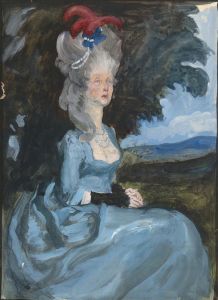
![[One from] Illustrations to Shakespeare 40](/imgs/258200/s/robert-smirke-one-from-illustrations-to-shakespeare-40-4c670d17.jpg)
